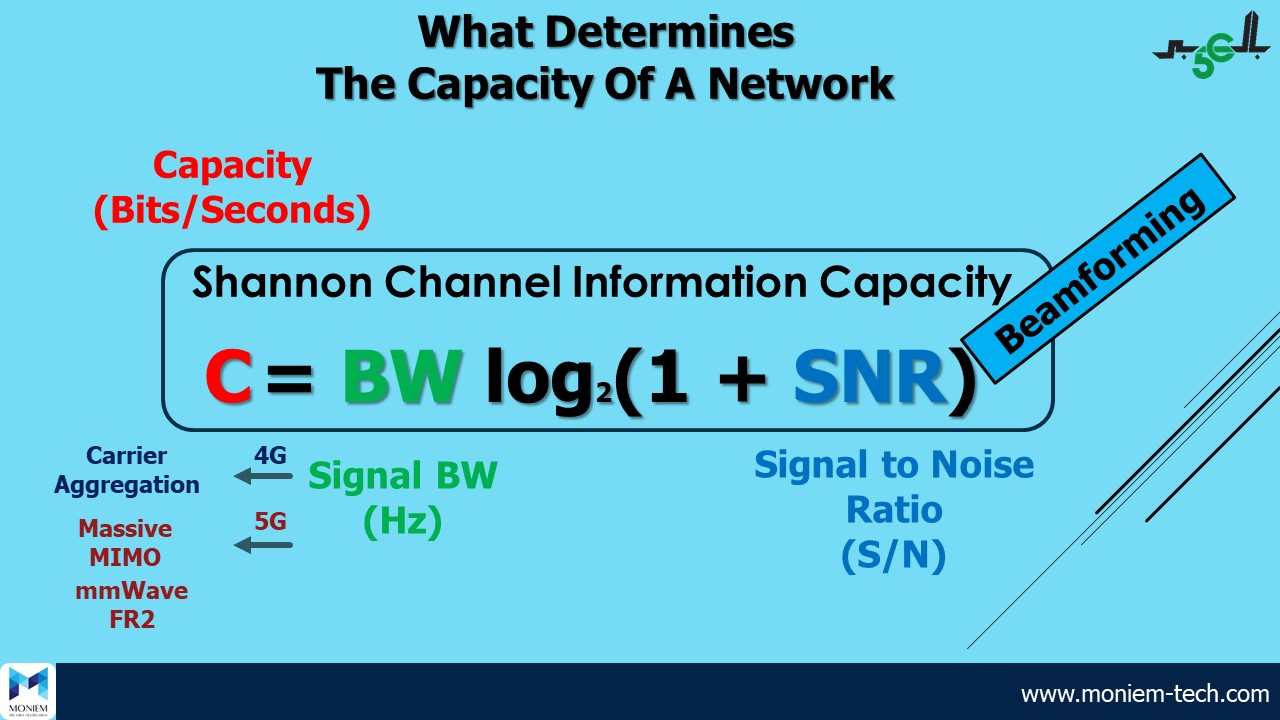In the early 1900’s two researchers working independently derived a relatively simple equation that serves as a Moore’s Law for the wireless industry: the Shannon- Hartley theorem.
This theorem gives an upper bound to the amount of information that can be transmitted over the wireless channel where the individual channel capacity is dependent on only two parameters: Channel Bandwidth (BW) and the Signal-to-Noise ratio (SNR).
While the capacity scales linearly with the channel bandwidth, it only scales at log2 for the signal to noise ratio:
C = BW log2(1 + SNR)

From the Shannon-Hartley theorem, there are three basic methods to increase network capacity
- Increase the channel bandwidth: In 4G, carrier aggregation was used to increase the available signal bandwidth and 5G FR2 uses the mmWave frequencies to obtain larger capacities.
- Increase the number of channels: MIMO utilizes the multipath scattering inside the network to concurrently transmit on several channels at the same time.
Similar to the channel bandwidth, network capacity also scales linearly with this effect, but with an upper limit determined by the correlation (or similarity) of the multipath inside the network. 5G FR1 relies on scaling up MIMO to provide increased data rates. - Increase the output power of the network: Due to the presence of the noise in the SNR, the asymptotic log scaling of the SNR, and health/safety concerns of high electromagnetic energy, this method has its limits.
One safer method of increasing the SNR throughout the network is the use of femtocells in areas of decreased coverage. By targeting the energy to a specific user, however, the energy efficiency of the network can be increased—this is referred to as “beamforming” and it is a key technology for both 5G FR1 & FR2 base stations.
Source: End-To-End 5G Test Solutions, Sponsored by Rohde and Schwarz
